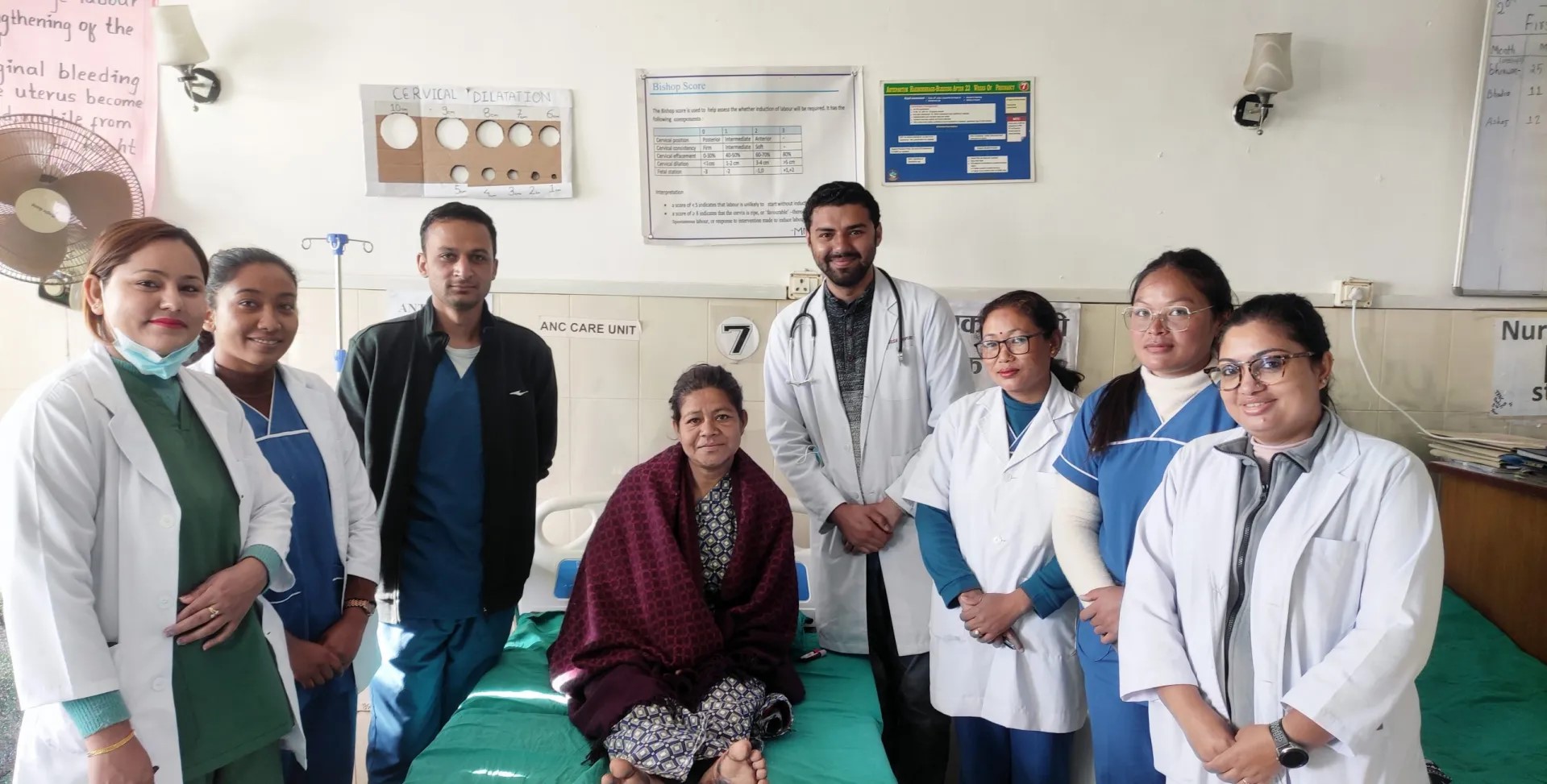
As per the World Health Organization, postpartum hemorrhage is the commonest cause of maternal mortality in low-income countries like Nepal and is the primary cause of 25% of maternal deaths globally. Most death occurs within 24 hours of delivery.
We are sharing a story where a women survives with severe post-partum hemorrhage. A 35-year-old lady from Sindhupalchok district delivered a baby at 7-months at home, was a normal delivery but due to non-vertex presentation, delivery delayed as head got stuck at the pelvis almost for 25 hours. She had massive vaginal bleeding after the delivery at home and went to the nearby health-post for further care. Due to unavailability of blood and uterotonics, they referred the case to provincial hospital of Doalkha (Pashupati Chaulagain Memorial Hospital- PCMH-a referral hospital in the district occupying >60% of maternal and child care of the district and daily > 250 patients flow). At presentation, she was very ill, almost collapsing situation with un-recordable blood pressure and pulse with peppery white skin.

Photo: Surviving women at Pashupati Chaulagain Memorial Hospital, Charikot, Dolakha.
Blood investigation showed her hemoglobin was 2gm/dl and blood group of A-positive. Rapid resuscitation with intravenous fluids and 6 pints of fresh blood transfusion along with uterotonics and manual removal of placenta done by a team of MDGP(MD general practitioner), MBBS, midwifes, anesthesia assistant and health aids). She was discharged after 3 days and her final hemoglobin level was 9gm/dl. This gives an exemplary case management at resource limited setting to reduce maternal mortality under the leadership of MDGPs.
Maternal deaths occur because of 3 delays in the provision of effective care: 1. A delay in decision by a family 2. A delay in transport to the health facility and 3. A delay in provision of quality health at the health facility. Nepal had reduced maternal mortality rate from 539 per 100,000 births in 1996 to 239 per 100,000 births in 2016. Nepal has to reduce maternal deaths to 116/100,000 births by 2022 to meet one of the sustainable development goals.
“Due to less availability of supply chain, inadequate qualified human resources and inadequate numbers of quality health facility, rural health facilities are still struggling to reduce the maternal mortality in optimum number”, said Dr Binod Dangal, MDGP consultant of the hospital. However, MD general practitioners (MDGP) have played key roles in CEONC (Comprehensive Emergency Obstetric and Neonatal Care) programs in more than 60% of district hospitals of Nepal, and also the role of MD obstetrics and midwifery have played major roles.
“Nepal has invested in CEONC programs, safe motherhood programs, training opportunities to upgrade skills of midwives like SBA, advanced SBA, safe abortion services and many others. Despite the efforts, country has not able to manage to reduce the number as per the plan and national health goals”, said Dr Rakshya Dhungana, MDGP.
To reduce maternal deaths further Nepal needs to ensure that the current family planning, birth preparedness, financial incentives, free delivery services, abortion care, and community post-partum care programs reach marginalized and vulnerable communities. Facilities offering comprehensive emergency obstetric care need to be accessible, and in hill and mountain areas, access could be supported by establishing maternity waiting homes.
Note: Nick Siemen Institute (NSI) did gap analysis at PCMH and supported 1 MDGP, 1 Medical Officer, 1 staff nurse, 1 anesthesia assistant and 1 biomedical technician along with some key medical supplies, which is found to be critical to run basic health services in existing government hospital.
Dr Binod Dangal and Dr Rakshya Dhungana are MDGP consultants at PCMH, Dr Aysh Neupane is Medical Officer at the same hospital working under NSI.